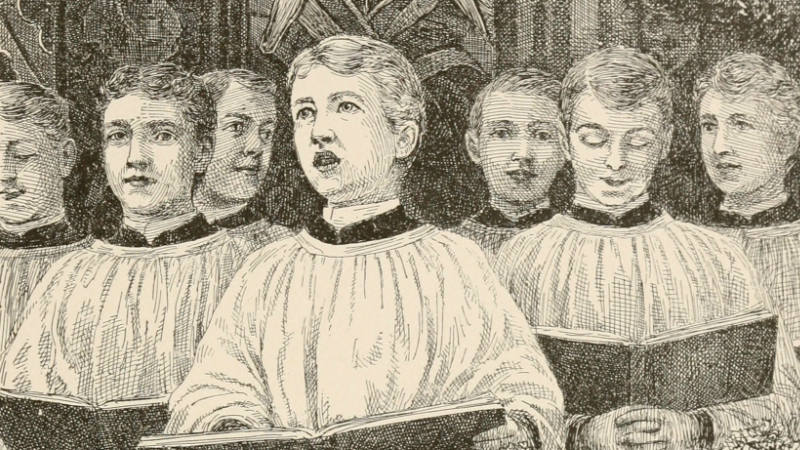Christmas carols are an essential part of the holiday season, a tradition that brings people together through music, celebrating the birth of Jesus Christ. The History of Christmas Carols traces back to England, where wandering musicians would travel from town to town, visiting castles and the homes of the wealthy, offering impromptu performances. Some theories suggest the roots of caroling are tied to the angels, shepherds, and Wise Men who praised Jesus upon His birth, singing and proclaiming joy for the holy child. Afterward, this tradition of joyous proclamations spread into the streets, giving rise to the custom of singing carols.

The Origins of the Word ‘Carol’
The word “carol” likely comes from the French term “caroller,” which described a type of dance accompanied by singing. In medieval Europe, especially between the 12th and 14th centuries, carols were often dance songs. These early carols were more than just music for Christmas; they were sung during festivals, processions, and religious mystery plays. Traditional carols were structured with alternating verses and a chorus, and the music was often lively and suitable for dancing.
Carols and the Church
During the 17th century in England, when Oliver Cromwell and the Puritans rose to power, Christmas celebrations—including caroling—were suppressed. The Puritans believed that many Christmas customs, including carols, were too frivolous and unspiritual. As a result, many traditional carols were banned, and some disappeared forever. However, the tradition of caroling was revived in the mid-19th century, a period known as the Victorian Era. This time marked a resurgence of Christmas traditions, with carols once again becoming popular in both England and the United States.
Many early Christmas carols celebrated joy and merriment, distinct from the more solemn hymns typically sung in churches. When Christmas caroling returned to popularity, some musicians adapted secular tunes, giving them new Christian lyrics to align with religious observances.
Evolution of Christmas Carols
The practice of modifying Christmas carols continues today, with pop artists giving classic carols a modern twist. These contemporary versions often feature updated melodies and rhythms, appealing to younger audiences and ensuring the survival of these beloved songs. From Bing Crosby’s “White Christmas” to Mariah Carey’s “All I Want for Christmas Is You,” modern renditions have become Christmas staples, played on the radio and streaming platforms every holiday season.
Christmas Carols in the United States and England
The 19th century saw a significant increase in the popularity of Christmas carols in both the United States and England. Many Christmas traditions were brought to the U.S. by English immigrants, and both countries share a close religious heritage, leading to similar carol repertoires. Iconic carols such as “Silent Night,” “Hark! The Herald Angels Sing,” and “O Come All Ye Faithful” remain popular across both countries.
Christmas Music in Modern Culture
Today, Christmas carols signal the start of the holiday season. Radio stations begin playing them as early as mid-November, and by early December, they can be heard in shopping malls, on TV commercials, and at festive events. Churches, schools, and community choirs often perform carols during nativity plays, Christmas concerts, and seasonal events. Caroling in public spaces, such as malls or neighborhoods, is a beloved tradition that fosters a sense of community and goodwill.
Fun Facts About Christmas and Carols
- Oldest Christmas Carol: One of the oldest known carols is “Corde natus ex Parentis” (Of the Father’s Love Begotten), dating back to the 4th century.
- Caroling in Public: The Victorian era popularized caroling in public spaces, which evolved into the community-driven caroling we know today.
- Christmas Music Popularity: According to Spotify, Mariah Carey’s “All I Want for Christmas Is You” remains the most-streamed Christmas song globally.
- Longest-Running Carol Service: The “Festival of Nine Lessons and Carols,” performed at King’s College Chapel in Cambridge, England, has been held annually since 1918 and is broadcasted worldwide.
- The First Christmas Carol Recorded: The first Christmas carol ever recorded was “Jingle Bells” in 1898, performed by the Edison Male Quartette.
Whether it’s traditional versions or modern adaptations, Christmas carols continue to evoke the festive spirit. Their melodies, old or new, help to create a sense of warmth, joy, and nostalgia as we count down to Christmas Day.

Questions and Answers OF The History of Christmas Carols

- Where is the tradition of Christmas carols believed to have originated?
- The tradition of Christmas carols is believed to have originated in England, where wandering musicians would visit castles and wealthy homes to perform spontaneous shows. There is also the belief that caroling came from the angels, shepherds, and Wise Men who praised Jesus at His birth, proclaiming their joy and extending the tradition to the streets.
- What is the origin of the word “carol”?
- The word “carol” comes from the French term “caroller,” which referred to a circular dance accompanied by singing. In the Middle Ages, carols were often dance songs sung during festivals and processions.
- How did carols evolve from the 12th to the 14th century?
- During the 12th to 14th centuries, carols were popular as dance songs. They were sung at festivals and processions and became part of religious mystery plays. Carols typically alternated between verses and choruses, with music that was lively and suitable for dancing.
- What happened to carols during Oliver Cromwell’s rule in the 17th century?
- During Oliver Cromwell’s rule in the 17th century, Christmas carols were banned in England as the Puritans saw them as too frivolous and unspiritual. Many carols disappeared forever, but the tradition was revived in the 19th century.
- Why did Christmas carols become popular again in the 19th century?
- Christmas carols became popular again during the Victorian Era in the 19th century, when many Christmas traditions were revived in both England and the United States. This resurgence coincided with a revival of many Christmas customs.
- What differentiates carols from traditional church hymns?
- Early carols were often joyful and festive, in contrast to the more solemn hymns sung in churches. When carols regained popularity, some secular tunes were adapted with Christian lyrics to align with religious observances.
- How have Christmas carols changed in modern times?
- In modern times, pop artists often give Christmas carols a fresh twist by using contemporary melodies and rhythms. This appeals to younger generations and helps keep the carols popular and relevant in today’s culture.
- When do Christmas carols typically start playing on the radio and in stores?
- Radio stations usually start playing Christmas carols in mid-November, marking the beginning of the holiday season. Carols begin to play in stores and malls in early December.
- What event has helped keep the tradition of Christmas carols alive in England?
- The “Festival of Nine Lessons and Carols,” held annually at King’s College Chapel in Cambridge since 1918, has helped keep the tradition of Christmas carols alive. This event is broadcast worldwide.
- What is the oldest recorded Christmas carol?
- One of the oldest known carols is “Corde natus ex Parentis” (Of the Father’s Love Begotten), dating back to the 4th century.

